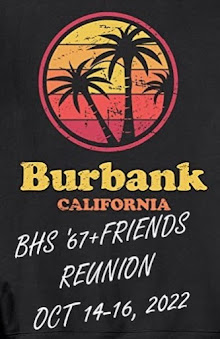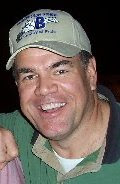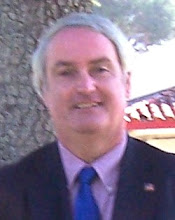
BURGER BEACON: “It seemed like everybody in town stopped at Bob’s” on Friday nights, a former company official wrote in a recent memoir.
Big Boy returns in all its Googie glory
Los Angeles Times
source
After lapsing into decline, the roadside restaurants are making a return.
By Jia-Rui Chong, Los Angeles Times Staff Writer
August 22, 2008
There's the massive doughnut that crowns Randy's Donuts in Inglewood.
There's the old Tail O' the Pup hot dog stand built in the shape of a hot dog.
Glory days Going on a hunt for Googie...But when it comes to classic Los Angeles roadside attractions, few can top the smiling boy in the red checkered overalls hoisting a towering burger above his shoulder.

Aficionados of Bob's Big Boy hamburger chain have been mourning the beloved outpost on Wilshire Boulevard near La Brea Avenue. The Big Boy on Wilshire closed at the end of July and is now more than 80% demolished, said Chris Nichols, chairman emeritus of the Modern Committee of the Los Angeles Conservancy and author of a book on Wayne McAllister, who designed many well-known Big Boy coffee shops.
But a new Bob's Big Boy is taking hold.
The new Big Boy in Downey is being built on the site of Johnie's Broiler, which in its heyday was the largest carhop drive-in ever built in California. The new owner plans to restore the original 1958 plans, cleaning up the mess from the partial demolition of the coffee shop in January 2007.
The Downey location could open as a Big Boy early next year.
"It's a big deal," Nichols said. The builders of the new location are seeking inspiration in the landmark Toluca Lake Bob's, which is marked by colorful neon lighting and vintage mid-century modern architecture. Bob's is expected to hire carhops.
"I am really looking forward to the one in Downey," he said.
The Big Boy empire began with a modest counter and 10 stools in Glendale. When Bob Wian opened the tin-roofed restaurant, barely bigger than a shack, with the $350 he got from selling his convertible in 1936, little did he know Bob's Big Boy coffee shops would multiply across the country and become a cultural icon.
Bob's Big Boy came to symbolize the "Southern California leisure lifestyle," Nichols said. "It meant cheap, plentiful, abundant land, food and buildings."
Within a year of opening the restaurant -- known then as Bob's Pantry -- a group of customers from an orchestra asked Wian to dream up something different, according to the website of Big Boys Restaurants International.
Wian cut a burger bun into three slices and added two hamburger patties, making the first double-decker hamburger.
Soon, the website said, a chubby boy came into the store and inspired a name for his sandwich and the restaurant. "I was so amused by the youngster -- jolly, healthy-looking and obviously a lover of good things to eat, I called him Big Boy," Wian said.
Bob's Big Boy restaurants, especially the ones with drive-ins, became a teen scene.
"They would go there and hang out and meet friends and it was colorful and fun and exciting and cheap," Nichols said.
At its peak in the 1960s, the company had 750 restaurants across the country, many of them designed by well-regarded architects, Nichols said.
The fiberglass statues of Big Boy in checkered overalls were so popular that teenagers often stole them and took them for joy rides.
"We were as popular as Elvis," Chris Hansen, a former vice president with the company, recalled in a recent memoir.
"It seemed like everybody in town stopped at Bob's [on Friday nights]. They were attracted by the good food, gorgeous waitresses and the action."
The popularity of Big Boys started to flag in the 1980s, probably because new owners of the chain were paring it down and the next generation of young people had moved on to flashier things, Nichols said.
But Big Boys are beginning a new expansion with about 40 to 50 scheduled to open in the next few years, Nichols said. "People kind of see it in more of its original light, as a fun place," he said.
He credits the Toluca Lake Bob's, which is hopping with diners seeking the feel of the 1950s, with helping this regeneration.
"They get to see it in its buffed-and-polished state instead of its last-legs state, which it was in for a while," Nichols said.
jia-rui.chong@latimes.com










No comments:
Post a Comment